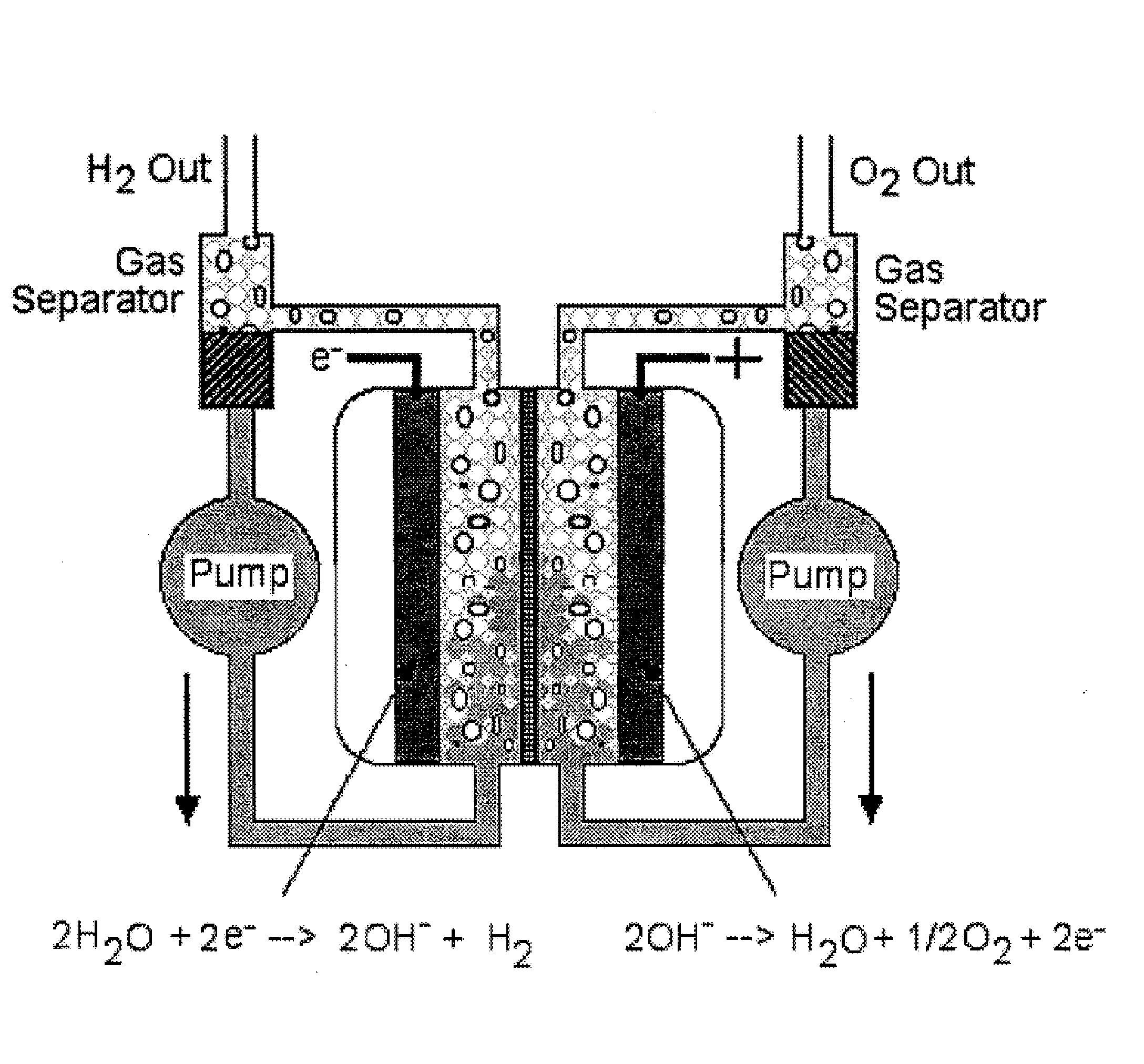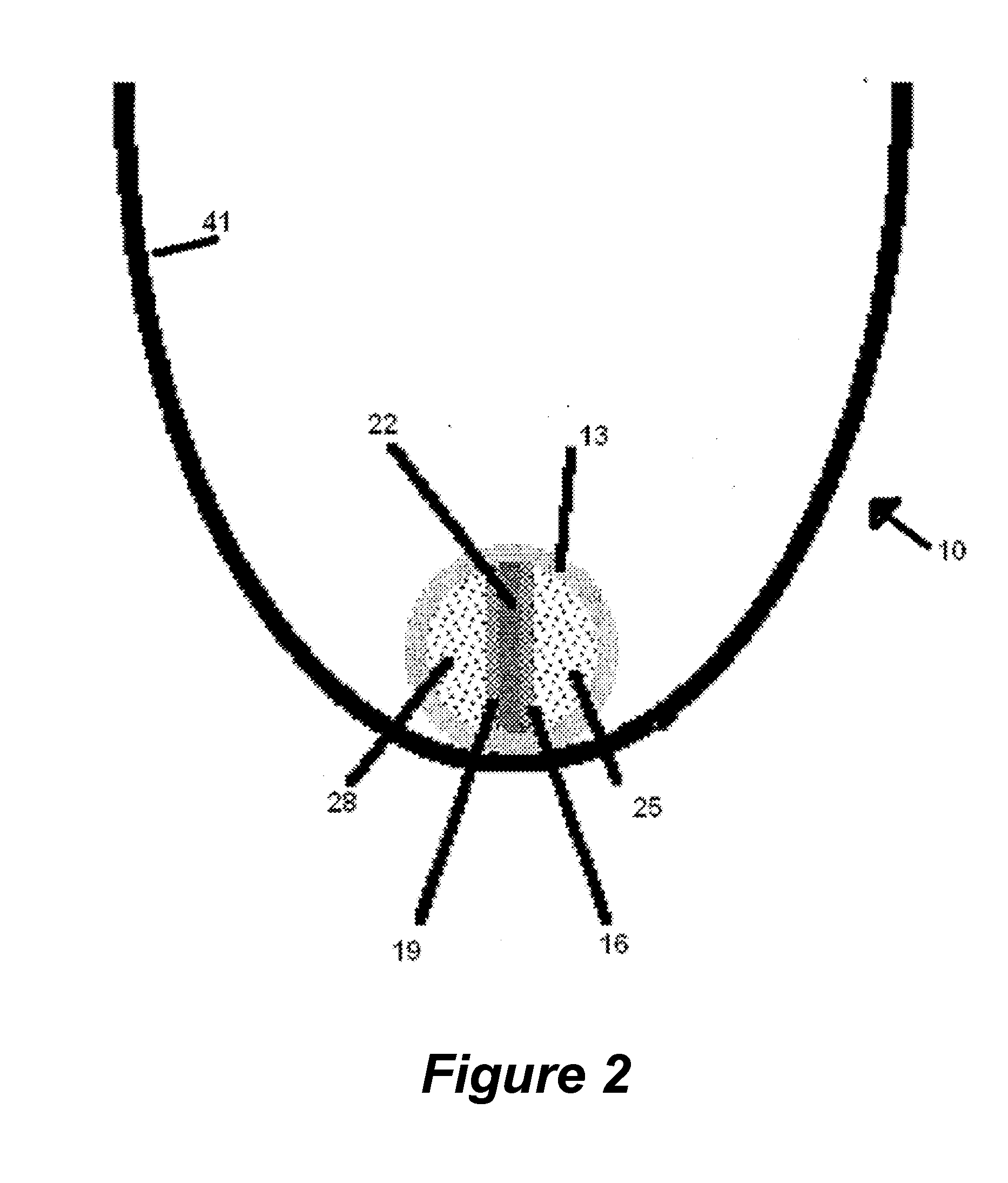Device and method for photolysis-assisted electrolysis
- Summary
- Abstract
- Description
- Claims
- Application Information
AI Technical Summary
Benefits of technology
Problems solved by technology
Method used
Image
Examples
Embodiment Construction
[0026]For purposes of summarizing the inventions and the advantages achieved over the prior art, certain items and advantages of the inventions are described herein. Of course, it is to be understood that not necessarily all such items or advantages may be achieved in accordance with any particular embodiment of the inventions. Thus, for example, those skilled in the art will recognize that the inventions may be embodied or carried out in a manner that achieves or optimizes one advantage or group of advantages as taught or suggested herein without necessarily achieving other advantages as may be taught or suggested herein.
[0027]FIG. 1 illustrates a traditional water electrolysis system. The main features of this system are pumps circulating at the anode and cathode to remove resulting oxygen and hydrogen gasses, respectively. The electrodes are typically oriented in a vertical fashion and are substantially solid, typically metal or electrodeposited metal with relatively low surface ...
PUM
| Property | Measurement | Unit |
|---|---|---|
| Fraction | aaaaa | aaaaa |
| Fraction | aaaaa | aaaaa |
| Diameter | aaaaa | aaaaa |
Abstract
Description
Claims
Application Information
 Login to View More
Login to View More - R&D
- Intellectual Property
- Life Sciences
- Materials
- Tech Scout
- Unparalleled Data Quality
- Higher Quality Content
- 60% Fewer Hallucinations
Browse by: Latest US Patents, China's latest patents, Technical Efficacy Thesaurus, Application Domain, Technology Topic, Popular Technical Reports.
© 2025 PatSnap. All rights reserved.Legal|Privacy policy|Modern Slavery Act Transparency Statement|Sitemap|About US| Contact US: help@patsnap.com



